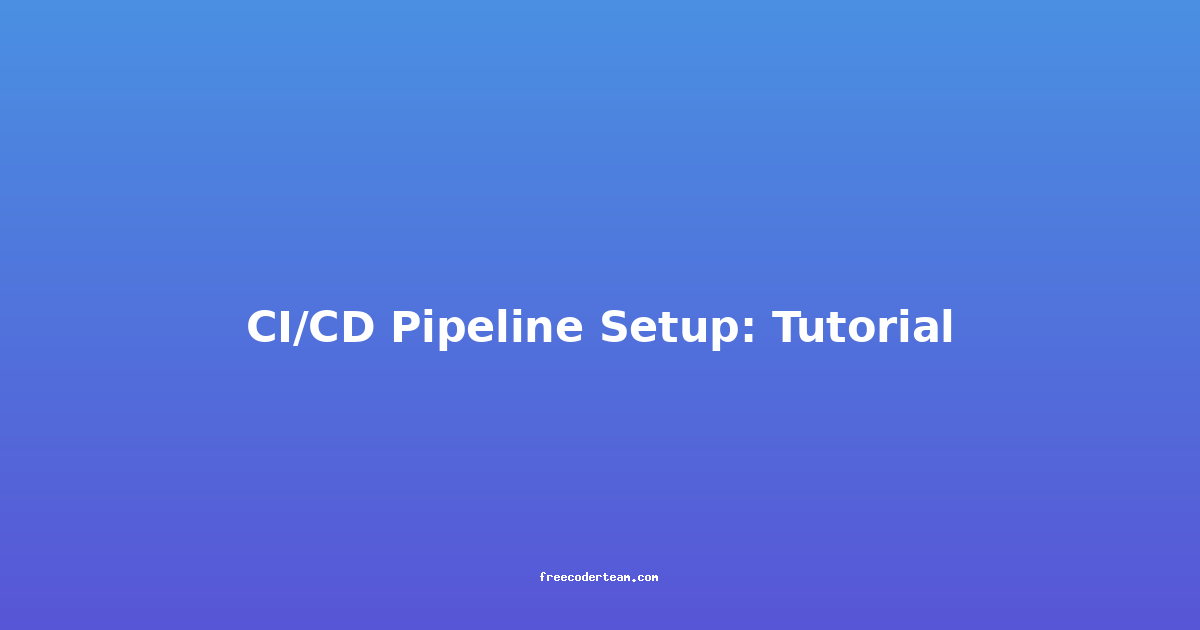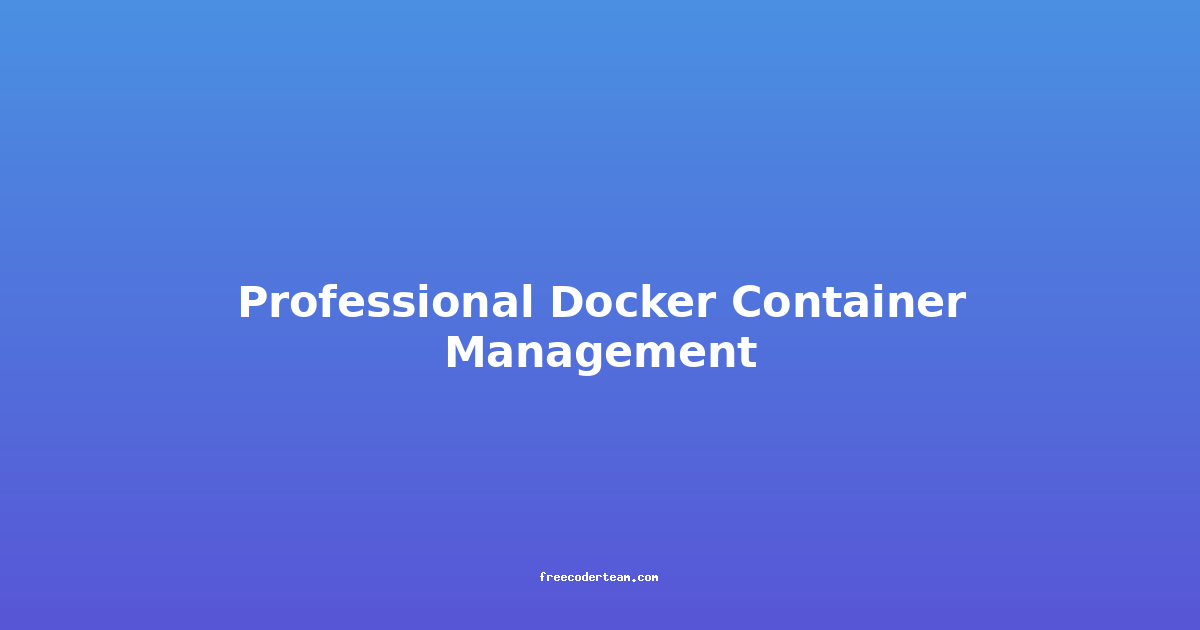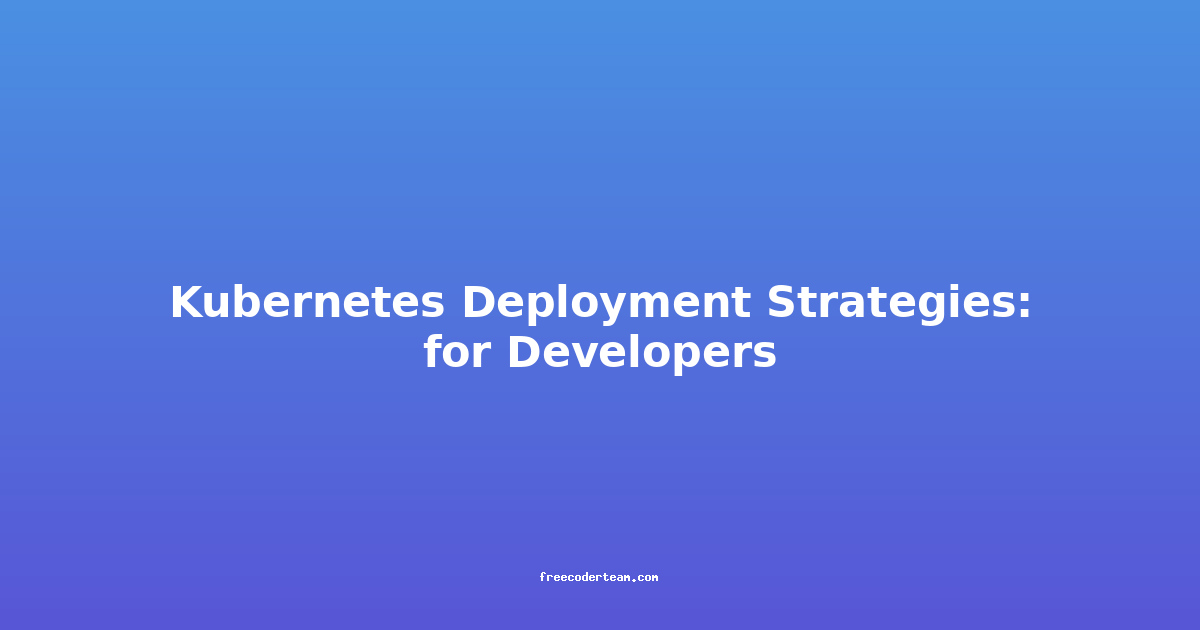CI/CD Pipeline Setup: A Comprehensive Tutorial
Continuous Integration (CI) and Continuous Deployment (CD) are essential practices in modern software development, enabling teams to deliver high-quality software faster and more reliably. In this tutorial, we'll walk through the process of setting up a CI/CD pipeline step by step. We'll cover the basics, best practices, and provide practical examples to help you implement a robust CI/CD workflow.
Table of Contents
- Introduction to CI/CD
- Prerequisites
- Step 1: Choose a CI/CD Tool
- Step 2: Set Up Your Repository
- Step 3: Define Your CI/CD Workflow
- Step 4: Implement Automated Testing
- Step 5: Configure Deployment
- Best Practices for CI/CD
- Conclusion
Introduction to CI/CD
CI/CD is a software development practice that automates the integration, testing, and deployment of code changes. Here's a quick overview of the key components:
- Continuous Integration (CI): Developers frequently merge their code changes into a central repository, and automated builds and tests are run to catch integration issues early.
- Continuous Deployment (CD): Once the code passes all tests, it is automatically deployed to production (or a staging environment).
CI/CD pipelines help reduce manual errors, improve code quality, and accelerate the delivery of new features.
Prerequisites
Before setting up a CI/CD pipeline, ensure you have the following:
- Version Control System (VCS): Use a tool like Git to manage your codebase.
- CI/CD Tool: Choose a platform like GitHub Actions, Jenkins, GitLab CI, or CircleCI.
- Automated Tests: Unit tests, integration tests, and end-to-end tests are essential for catching bugs early.
- Deployment Environment: A staging or production environment where your application will be deployed.
Step 1: Choose a CI/CD Tool
There are several popular CI/CD tools available:
- GitHub Actions: Built into GitHub, ideal for open-source projects.
- Jenkins: Highly customizable and widely used in enterprise environments.
- GitLab CI: Integrated with GitLab, offering a seamless experience.
- CircleCI: Known for its simplicity and speed, great for small to medium teams.
For this tutorial, we'll use GitHub Actions as it's free for open-source projects and easy to set up.
Step 2: Set Up Your Repository
- Create a Repository: If you don't already have one, create a GitHub repository for your project.
- Initialize Your Code: Add your codebase to the repository. Ensure you have a
README.mdand a.gitignorefile. - Add Tests: Write unit tests and integration tests for your application. For example, if you're using Python, you might use
pytest.
Step 3: Define Your CI/CD Workflow
CI/CD workflows are defined using configuration files. For GitHub Actions, this is done using a workflow file in the .github/workflows directory.
CI Workflow Example
Here's a simple CI workflow that runs tests whenever code is pushed to the main branch:
# .github/workflows/ci.yml
name: CI
on:
push:
branches: [main]
pull_request:
branches: [main]
jobs:
build:
runs-on: ubuntu-latest
steps:
- name: Checkout code
uses: actions/checkout@v3
- name: Set up Python
uses: actions/setup-python@v4
with:
python-version: '3.9'
- name: Install dependencies
run: |
python -m pip install --upgrade pip
pip install -r requirements.txt
- name: Run tests
run: |
pytest
CD Workflow Example
Once the tests pass, you can set up a deployment workflow. Here's an example that deploys to a server using SSH:
# .github/workflows/cd.yml
name: CD
on:
push:
branches: [main]
jobs:
deploy:
runs-on: ubuntu-latest
steps:
- name: Checkout code
uses: actions/checkout@v3
- name: Set up SSH key
uses: appleboy/ssh-action@v1
with:
host: your-server-ip
username: your-username
key: ${{ secrets.SSH_PRIVATE_KEY }}
- name: Deploy to server
run: |
ssh your-username@your-server-ip "cd /path/to/your/app && git pull && npm install && npm start"
Step 4: Implement Automated Testing
Automated testing is a critical part of CI/CD. Here's how you can set it up:
-
Unit Tests: Write tests for individual components of your application. For example, in Python:
# tests/test_example.py def test_addition(): assert 1 + 1 == 2 -
Integration Tests: Test how different components work together. For example, in JavaScript:
// tests/integration.test.js const { add } = require('./app'); test('adds 1 + 1 to equal 2', () => { expect(add(1, 1)).toBe(2); }); -
End-to-End Tests: Use tools like Selenium or Cypress to test the entire application flow.
Step 5: Configure Deployment
Deployment can vary based on your infrastructure. Here are some common approaches:
- Docker: Use Docker to containerize your application and deploy it to a container orchestration platform like Kubernetes.
- Server: Use SSH to deploy directly to a server.
- Cloud Services: Deploy to cloud platforms like AWS, Azure, or Google Cloud.
For example, if you're deploying a Node.js application to a server, you might use the following workflow:
# .github/workflows/cd.yml
name: CD
on:
push:
branches: [main]
jobs:
deploy:
runs-on: ubuntu-latest
steps:
- name: Checkout code
uses: actions/checkout@v3
- name: Set up Node.js
uses: actions/setup-node@v3
with:
node-version: '16'
- name: Install dependencies
run: npm install
- name: Build application
run: npm run build
- name: Deploy to server
uses: appleboy/ssh-action@v1
with:
host: your-server-ip
username: your-username
key: ${{ secrets.SSH_PRIVATE_KEY }}
script: |
cd /path/to/your/app
git pull
npm install
npm run build
pm2 restart app
Best Practices for CI/CD
- Keep Pipelines Fast: Optimize your tests and build processes to reduce pipeline execution time.
- Parallelize Tasks: Run tests in parallel to speed up the pipeline.
- Use Secrets Safely: Store sensitive information like API keys and SSH keys as repository secrets.
- Monitor Pipeline Health: Use tools like Prometheus or Datadog to monitor pipeline performance.
- Regularly Review and Update: Keep your pipelines up to date with the latest tools and practices.
Conclusion
Setting up a CI/CD pipeline is a powerful way to improve your software development process. By automating integration, testing, and deployment, you can deliver high-quality software faster and with fewer errors. Start by choosing a CI/CD tool, setting up your repository, defining your workflows, implementing automated tests, and configuring deployment.
Remember, CI/CD is an ongoing process. Continuously refine your pipelines based on feedback and new requirements to ensure they remain effective and efficient.
Happy coding! 🚀
If you have any questions or need further assistance, feel free to reach out!




